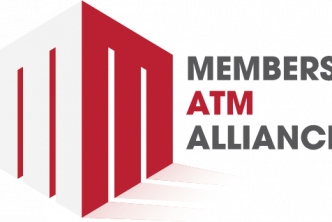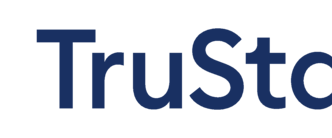By Mark Roe
Executive Vice President of National Sales
John M. Floyd & Associates
Consumers expect the products and services they receive from their financial institution to be based on processes and procedures that safeguard their best interests. This is especially important when they are faced with an emergency expense that exceeds their account balance or when they inadvertently make an error in balancing their account that leads to an overdraft. When it comes to providing your members with the tools and the support they need to effectively maintain their finances when emergencies or errors occur, are you directing your time and resources toward strategies that provide successful results — for them and your credit union?
Transparency opens the way for trust and long-term security
“A lack of transparency results in distrust and a deep sense of insecurity.” — the Dalai Lama
A little over 10 years ago, regulators made significant changes to overdraft rules to increase transparency and protect consumers from unclear disclosures and discriminatory practices. However, overdraft programs with variable limits, based on data members can’t see, often lead to confusion — especially for program users who are in the dark about why their overdraft limit changes irregularly or why a transaction is returned.
A fully transparent service — with established limits that are explained upfront at the time of account opening and reviewed periodically — provides members with consistent and reliable financial security that can help them to better deal with an occasional shortfall. There is no guesswork involved as to if they have overdraft coverage and there are no surprise fees to throw them off their game.
With a complete understanding of the program’s terms, members are more confident they can trust their financial institution to provide the security they need to cover important expenses and emergencies that would otherwise lead to an overdrawn account.
Highest levels of service depend on building relationships
“The greatest technology in the world has not replaced the ultimate relationship building tool between a customer and a business―the human touch.” ― Shep Hyken
There is no question that new and improved technologies have increased the capability to track account activity, increase process efficiencies and generate measurably better performance results. But providing members with a level of service which builds trust and leads to long-term relationships involves much more than determining where they plot on a data matrix.
Overdraft programs based solely on analytics and data lack personalized service and value. Utilizing parameters that limit access to a safety net for some — based solely on undisclosed account information — doesn’t take into consideration other important aspects of a person’s overall financial health or ability to repay. Overlooking this fact can result in a breach of trust and threaten overall member satisfaction and retention.
On the other hand, a member-focused overdraft strategy provides clear disclosures and ongoing guidance to help members solve their financial challenges. This includes regular communication regarding overdraft limits, counseling and information on how to keep track of an account balance, as well as practical advice regarding alternative solutions to provide a better fit for their individual circumstances.
The added support of in-depth employee education opportunities ensures that your staff fully understand how the program works and how to explain it effectively. With strong program knowledge and increased confidence, your important frontline representatives are empowered to build relationships with members. They are better equipped to understand member needs and able to confidently provide information regarding the options you offer, and much more.
Compliance guarantee protects members and your institution
“A well-executed user experience builds trust.” ― Tom Creighton
Just as consumers shy away from financial products and services that are unclear and confusing, credit unions interested in avoiding the risks of compliance or legal uncertainty should avoid non-disclosed overdraft solutions and strategies that open them up for possible examiner or class action scrutiny.
If an overdraft provider doesn’t offer a written 100% compliance guarantee and access to ongoing regulatory expertise and advice on compliance issues that you might not identify on your own, they likely won’t be standing by your side if an examiner questions your practices.
An overdraft partner that makes full compliance a top priority is one that has the expertise and proper resources to keep track of the latest regulatory expectations to identify potential areas of concern before they hit your radar. What’s more, they put those resources to work to help you incorporate the necessary process and procedural changes to address any issues that might be concerning.
There’s a lot more involved in a successful overdraft strategy than limits
“In the successful organization, no detail is too small to escape close attention.” — Lou Holtz
An overdraft strategy should be based on doing the most good for consumers. If your solution fails to provide all of your members with the information they need to understand how your service works and how to use it effectively, you’re putting your institution at risk from a compliance standpoint. From a service and performance perspective, you’re missing out on a great opportunity to strengthen your results.
With the right combination of best-in-class software, compliance resources, comprehensive employee training, and ongoing evaluation and effective recommendations, you’ll have the tools you need to manage a more responsible solution through:
- greater program automation and efficiency;
- more in-depth account tracking, analysis and reporting — including tools to identify greater opportunities to strengthen and protect revenue;
- compliance-tested messaging to simplify the member communications process; and
- on-going guidance and advice to help you effectively address issues that are key to meeting consumer, regulatory and performance expectations.
Make the best choice for your members and your credit union
“Quality is never an accident; it is always the result of high intention, sincere effort, intelligent direction and skillful execution; it represents the wise choice of many alternatives.” – William A Foster
There are myriad options for consumers to consider when choosing financial products and services. Some sound especially attractive when they are heavy on technology and convenience. Likewise, credit unions have options when it comes to offering overdraft protection to members.
Don’t be fooled by so-called “plug and play” solutions that rely on complex data matrices to assign undisclosed limits to members and deny the service when balances may temporarily fall below a pre-determined threshold —unbeknownst to the individual — at a time when they might need it most. Not only will this choice lessen financial security and weaken member trust, it can lead to greater risk for potential compliance-related issues, given the level of transparency that regulators have come to expect.
Remember, no amount of automation or AI-driven technology will bring back members if they have lost trust in your institution to do the right thing for their financial well-being, or they no longer see value in your service offerings. Make sure that you are managing your overdraft solution in a manner that truly provides a reliable safety net your members can depend on when they have occasional short-term needs. In the long-term, this strategy will also protect your institution from regulatory and legal risk; and provide sustainable service and revenue opportunities, as well.






